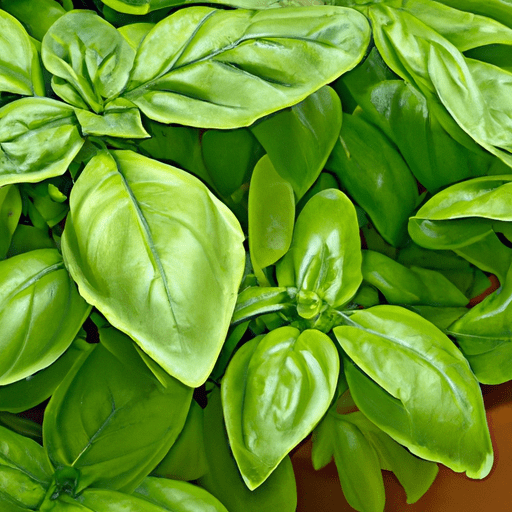The Delightful and Versatile Lemon Basil
When it comes to versatile herbs that elevate the flavors of our favorite dishes, lemon basil steals the show! Its delightful citrusy aroma, refreshing taste, and vibrant green leaves make it a must-have herb in any culinary enthusiast’s kitchen. In this blog post, we will explore the wonderful world of lemon basil, including its taste, common uses in cooking, nutritional value, and a few interesting historical facts.
The Taste of Sunshine
Lemon basil, also known as “Ocimum basilicum citriodorum,” is a delightful herb that combines the classic flavors of basil with a refreshing hint of lemon. Its aromatic leaves release an invigorating scent reminiscent of citrus orchards and bring a burst of freshness to any dish. The moment you taste lemon basil, your taste buds will be treated to a perfect harmony of basil’s peppery undertones and the tangy zest of lemon, creating a flavor profile that is truly exceptional.
The Culinary Magic of Lemon Basil
Lemon basil’s versatility in the kitchen is truly remarkable. It pairs well with a wide range of dishes, both sweet and savory, and adds a unique twist that will leave you craving for more. Here are some popular ways to use this extraordinary herb:
- Salads: Add chopped lemon basil leaves to your green salads, grain salads, or pasta salads to give them a fresh and citrusy kick.
- Marinades and Dressings: Incorporate lemon basil into your marinades and dressings to infuse your meats, vegetables, and salads with a zesty flavor.
- Seafood: Sprinkle chopped lemon basil on grilled fish or seafood dishes to elevate their taste and add an element of brightness.
- Sauces and Pesto: Blend lemon basil leaves with garlic, pine nuts, and olive oil to create a flavorful lemon basil pesto that can be used as a sauce, a dip, or a spread.
- Teas and Infused Water: The fragrant leaves of lemon basil can be steeped in hot water to create a soothing and refreshing herbal tea or infused water.
Nutritional Powerhouse
Not only is lemon basil a treat for our taste buds, but it also brings a range of nutritional benefits to the table. This herb is a great source of vitamins A, K, and C, as well as essential minerals like calcium, iron, and potassium. Additionally, lemon basil contains powerful antioxidants that promote overall health and well-being.
Fun Facts and Historical Tidbits
Lemon basil has a rich history and intriguing folklore associated with it. Here are a few fascinating facts about this remarkable herb:
- Lemon basil originates from India and other parts of Southeast Asia, where it has been used for centuries in traditional medicine and cooking.
- It was believed to have mystical and protective properties and was often used in religious ceremonies.
- In Thai cuisine, lemon basil is known as “Maenglak” and is an essential ingredient in popular dishes like Pad Krapow.
- Lemon basil gained popularity in Europe during the spice trade in the 17th century when explorers brought back exotic herbs and spices from their voyages.
So next time you’re searching for that perfect herb to brighten up your dishes, look no further than lemon basil. Its delightful taste, versatility in cooking, and impressive nutritional value make it a true kitchen staple. Whether you’re adding it to a summer salad or infusing it in refreshing tea, lemon basil is sure to bring a burst of sunshine to your culinary creations.
Lemon Basil
Origin and Common Names: Lemon basil, also known as Ocimum basilicum citriodorum, is a member of the basil family (Lamiaceae). It is thought to have originated in Southeast Asia, specifically Indonesia and Thailand. Lemon basil is commonly known by various names, including hoary basil, Thai lemon basil, and bai maenglak.
Flavor and Aroma: As the name suggests, lemon basil possesses a strong lemony aroma and flavor. Its leaves emit a citrusy scent resembling both lemon and basil, making it a popular ingredient in various culinary dishes.
Culinary Uses: Lemon basil is widely used in Southeast Asian cuisine, particularly in Thai and Indonesian dishes. It is frequently incorporated into bowls of noodles, curries, stir-fries, soups, and salads. The flavorful leaves can also be used to infuse oils, vinegars, and beverages such as tea or lemonades.
Nutritional Benefits: Lemon basil, like regular basil, is a good source of vitamins A and K. It also provides essential minerals such as iron, calcium, and magnesium. While its nutritional content can vary slightly depending on cultivation and preparation methods, lemon basil contributes to a well-rounded diet.
Unique Properties: One unique property of lemon basil is its ability to add a citrusy twist to dishes without the need for actual lemons. This makes it a versatile ingredient for individuals who enjoy lemon flavor but want to avoid the acidity or moisture that fresh lemons can introduce.
Historical Significance: Basil has a long history of cultivation and use in many cultures. It is considered sacred in certain traditions and is often associated with rituals and symbolism. While specific historical references to lemon basil may be limited, basil as a whole has been used for culinary, medicinal, and ceremonial purposes for centuries.
Now that you have these facts, you’ll be able to appreciate lemon basil’s unique qualities in the kitchen and gain a better understanding of its rich cultural background.




Use the share button below if you liked it.
It makes me smile, when I see it.